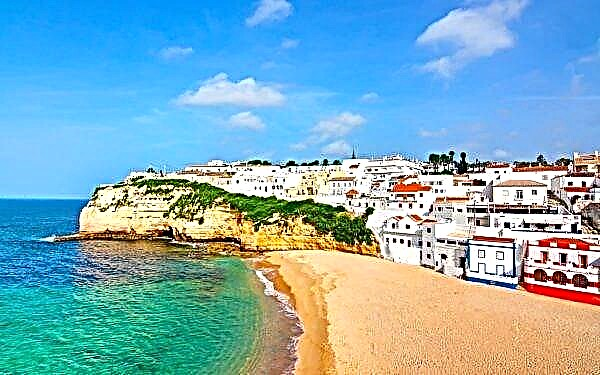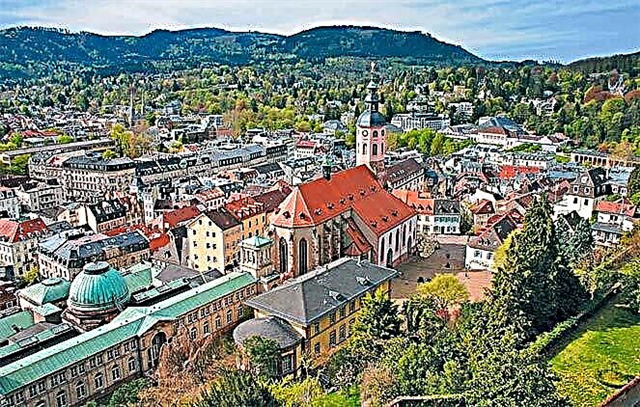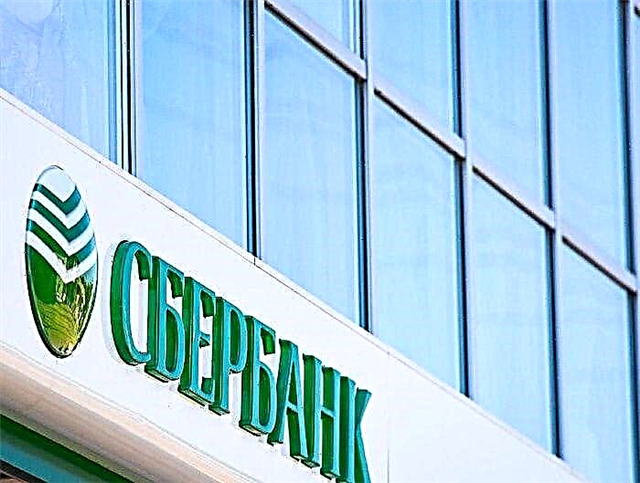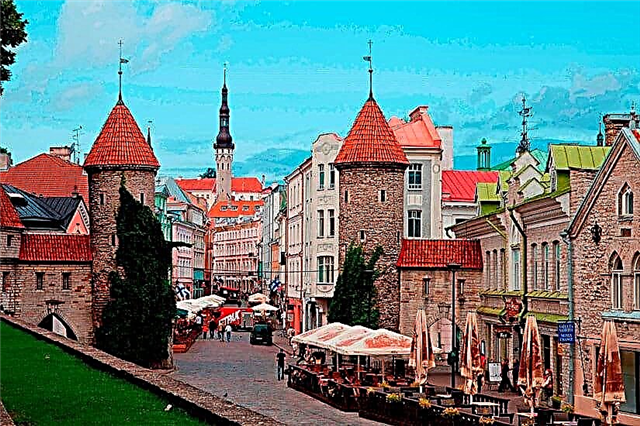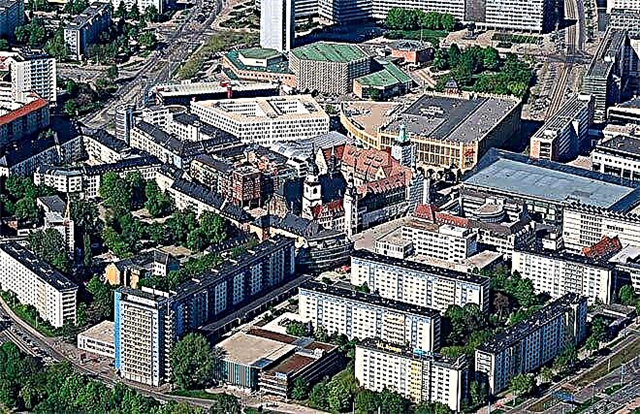Many citizens from Russia and other CIS countries consider buying real estate in Germany a profitable investment, and this is true. A stable economic and political situation, a high standard of living in the country, as well as a moderate rise in real estate prices make it possible to invest money in housing or commercial facilities without much risk. Real estate in Chemnitz is attractive because the city is located in Saxony - here housing prices are lower than in the western federal states. The city also has a number of other advantages that you should familiarize yourself with in more detail.

Main characteristics of the real estate market
Chemnitz is the third largest city in Saxony (after Dresden and Leipzig). As one of the industrial centers of Germany, Chemnitz in 1944-1945. badly damaged by bombing (30% of the city survived).
In the era of the GDR, Chemnitz (Karl-Marx-Stadt) became a symbol of socialist construction: the center was restored, new residential quarters were built.
Interesting fact. The famous seven-meter bronze head of Karl Marx is located in Chemnitz. This is the second largest bust in the world (after the bust of Lenin in Ulan-Ude). Chemnitz has nothing to do with Karl Marx's biography - the work of art was donated to Karl-Marx-Stadt in 1973 by the sculptor Lev Kerbel, a friend of E. Honnecker.
After the unification of Germany, a lot has changed in the life of the city, which also affected the local real estate market. The municipality of Chemnitz, especially for foreigners who come to the city, has published a special information brochure "Welcome to Chemnitz", section 3 of which - "Accommodation" - is devoted to real estate in the city.
In addition to the all-German stability of housing prices and the absence of their sharp fluctuations, the main trends in the local market include:
- lower than in the western lands of the Federal Republic of Germany, real estate prices;
- an oversupply of secondary housing stock built in the era of the GDR (35 thousand empty apartments);
- a steady downward trend in the population;
- lower rental rates in comparison with the western federal states.
Among the factors that affect the market conditions, you should also name:
- a favorable ecological situation in the city, an abundance of greenery and lakes;
- comfortable living conditions: well-developed infrastructure, an extensive public transport network, availability of work, a large number of cultural institutions;
- new buildings in the southern part of Chemnitz (on the site of the old airport).
City districts
Chemnitz is rightfully recognized as the "city of modernity" in Germany. Its layout differs from the layout of other German cities: the streets are wider, well-lit, and there is a lot of open space.
The closure of mining and metallurgical enterprises contributed to the improvement of the environmental situation; today, agricultural land and garden plots are popular in the suburbs of the city.
The city is divided into 39 administrative districts.

All districts and suburbs of the city are connected to the center by a public transport network: tram, bus and city train. The developed road network allows car owners to reach the Autobahn within 8 minutes.
Any area of Chemnitz is quite suitable for a comfortable stay. The city administration adheres to the principle of family orientation: regardless of the place of residence, schools, kindergartens, shops, hospitals, etc. should be in close proximity.
Nevertheless, a number of areas can be identified that are considered more prestigious. First of all, these are the central regions of Chemnitz.
The center was rebuilt after the war, taking into account the convenience: old buildings are combined with modern buildings. In addition to residential buildings, many public buildings, banks, trading houses were erected.
Interesting fact. Chemnitz houses three Art Nouveau pieces by the famous Belgian architect Henri van de Velde: the villas of Kerner, Esch and Quisisana.
The central areas are the most attractive for those who are interested in commercial real estate in Chemnitz (for example, apartment buildings). Prices are higher here than in other areas of the city, but the investment will pay off faster.
Centrum. There are city bus and railway stations, the Technical University of Chemnitz, where more than 10 thousand students study. Kassberg. The area is distinguished by its architectural originality and picturesqueness. Here are concentrated houses built during the Gründer era - 1870-1930s. Of particular interest are the buildings in the Bauhaus style, the new materiality. Accordingly, prices for such apartments are high. This area was chosen by wealthy immigrants from the CIS - there are Russian specialized shops in the area. There are many restaurants, clubs, pubs and bars here.
Kassberg. The area is distinguished by its architectural originality and picturesqueness. Here are concentrated houses built during the Gründer era - 1870-1930s. Of particular interest are the buildings in the Bauhaus style, the new materiality. Accordingly, prices for such apartments are high. This area was chosen by wealthy immigrants from the CIS - there are Russian specialized shops in the area. There are many restaurants, clubs, pubs and bars here. Borna-Heinersdorf and Schlosschemnitz. These are some of the best areas to live in, so buying and selling a home is more profitable here. Nearby there is the Chemnitz shopping center, a favorite recreation place for the townspeople - the Küchwald park with an open-air theater. The city center can be reached in 15 minutes.
Borna-Heinersdorf and Schlosschemnitz. These are some of the best areas to live in, so buying and selling a home is more profitable here. Nearby there is the Chemnitz shopping center, a favorite recreation place for the townspeople - the Küchwald park with an open-air theater. The city center can be reached in 15 minutes. Altendorf. This is the traditionally Jewish quarter of the city (it was destroyed during the Nazi rule). Now the Jewish community numbers over 1,000 people, and there is also a synagogue here. The Chemnitz Klinikum (Klinikum Chemnitz gGmbH) is located in the district - one of the largest non-profit medical institutions in Germany: 1,745 beds, 5,000 employees, more than 20 medical centers and institutes.
Altendorf. This is the traditionally Jewish quarter of the city (it was destroyed during the Nazi rule). Now the Jewish community numbers over 1,000 people, and there is also a synagogue here. The Chemnitz Klinikum (Klinikum Chemnitz gGmbH) is located in the district - one of the largest non-profit medical institutions in Germany: 1,745 beds, 5,000 employees, more than 20 medical centers and institutes. Until recently, there were practically no African and Asian migrants in Chemnitz (although the number of refugees from Syria has recently increased). Today, more than 4% of the city's population is made up of foreign immigrants, most of them from Ukraine, Russia and Kazakhstan.
Until recently, there were practically no African and Asian migrants in Chemnitz (although the number of refugees from Syria has recently increased). Today, more than 4% of the city's population is made up of foreign immigrants, most of them from Ukraine, Russia and Kazakhstan.
Most foreigners today live in the Sonnenberg area; German residents of Chemnitz consider it to be the most problematic in the city. The Rabenstein area is one of the suburban areas. Here, on the shores of the Oberrabenstein reservoir, are the best river beaches in Europe, and the annual European hip-hop and reggae festival Splash takes place.
The Rabenstein area is one of the suburban areas. Here, on the shores of the Oberrabenstein reservoir, are the best river beaches in Europe, and the annual European hip-hop and reggae festival Splash takes place. Suburban areas - Gruna, Mittelbach, Ebersdorf and others - are attractive with an abundance of greenery: there are villas with pools and other luxury real estate.
Suburban areas - Gruna, Mittelbach, Ebersdorf and others - are attractive with an abundance of greenery: there are villas with pools and other luxury real estate.
Renting a property in Chemnitz
Residential real estate rental in Chemnitz, despite the fact that in the past three years the demand for housing in the city has begun to increase and prices have also crept up, it still remains attractive and affordable for immigrants, students and other budget housing seekers.
The cost of long-term rental housing in Chemnitz is lower in comparison not only with the western federal states and Germany in general, but also with other Saxon cities (Dresden, Leipzig).
 The rental market for apartments in Chemnitz is vast, and the demand does not exceed the supply. In such conditions, landlords make concessions to tenants.
The rental market for apartments in Chemnitz is vast, and the demand does not exceed the supply. In such conditions, landlords make concessions to tenants.
Higher rent - for housing in prestigious areas of the city, in buildings with improved comfort or historical monuments. It is here that it is more profitable to invest in an apartment building. The yield on long-term rental of apartments ranges from 4 to 6%.
Thus, the purchase of a 4-5-storey building for 10-12 apartments in the historical center of the city will cost from 1 million euros, but will bring in annual revenue of 75-95 thousand euros.

One-room apartments (30 sq.m.) in the city center will cost an average of 325 to 355 euros per month (outside the center - from 135 to 320 euros), three-room apartments - from 600 to 1200 euros (the same outside the center - from 500 to 1000 Euro).
Buying a property
The average cost of housing in Chemnitz also opens up great opportunities for buying real estate in Germany.
So, you can buy a one- or two-room apartment (30-40 m2) here for a price that is almost half the average price in Saxony and almost four times less than the average price in the country. The price depends on the location of the apartment, its living space, condition and can range from 450 to 840 euros per sq. m.
The price depends on the location of the apartment, its living space, condition and can range from 450 to 840 euros per sq. m.
So, a one-room apartment (50 sq. M) in Sonennberg will cost 20 thousand euros.
A two-three-room apartment in one of the best areas of Borna-Heinersdorf (57-60 sq.m.) costs 50-55 thousand euros.
A four-room apartment in Kassberg (95 sq.m.) will cost 260 thousand euros.
On the outskirts of the city, prices are lower. In the Ainsidel area a two-three-room apartment (from 44 to 75 sq.m.) will cost from 18 to 34 thousand euros. A detached house (135 sq. M) for six rooms in Marketsdorf will cost 180 thousand euros, in Centrum a private house for four rooms (133 sq. M.) Will cost 188 thousand euros.
A detached house (135 sq. M) for six rooms in Marketsdorf will cost 180 thousand euros, in Centrum a private house for four rooms (133 sq. M.) Will cost 188 thousand euros.
In Helbersdorf, a house (360 sq.m.) will cost 230 thousand euros.
Cost of living in the city
Living expenses in Chemnitz are the main expense. Homeowners can save on rent, but utility bills ("cold" and "hot") will have to be paid to everyone.
Basic payment (electricity, heating, air conditioning, cold water, garbage disposal) for an apartment of 85 sq. m will cost from 85 to 300 euros per month. For the Internet - from 10 to 40 euros. The payment for a minute of mobile communication (without tariff and plan) will be from 0.07 to 0.2085 euros.
It should be borne in mind that there are other necessary costs. Thus, the second main expense item in Chemnitz is related to food. Food costs in restaurants and cafes are:
| Average price in EUR | Price range | |
|---|---|---|
| Food (in an inexpensive cafe) | 10.00 | 5.00 — 14.00 |
| Food for two (average restaurant) | 45.00 | 30.00 — 54.00 |
| Fast food (McDonald's) | 7.00 | 5.00 — 8.00 |
| Local beer (0.5 l) | 3.00 | 2.00 — 4.00 |
| Imported beer (0.33 l) | 3.00 | 1.75 — 3.50 |
| Cappuccino | 2.60 | 1.50 — 3.00 |
| Coca-Cola (0.33 L) | 2.10 | 0.55 — 3.00 |
| Water (0.33 L) | 1.81 | 0.50 — 2.00 |
Considering that prices in local cafes and restaurants are high, it is possible to save on food only by cooking at home.
Prices for groceries in Chemnitz supermarkets from the basic set (March 2021):
| Products | Average price in EUR | Price range |
|---|---|---|
| Milk (1 l) | 0.68 | 0.50–0.80 |
| White bread (500 gr.) | 0.90 | 0.55–1.50 |
| Rice (1 kg) | 1.81 | 0.85–2.00 |
| Chicken eggs (12 pcs.) | 1.53 | 1.00–2.50 |
| Hard cheese (1 kg) | 5.67 | 2.00–9.90 |
| Chicken fillet (1 kg) | 6.48 | 2.50–9.00 |
| Beef (1 kg) | 10.05 | 5.40–12.50 |
| Apples (1 kg) | 1.99 | 1.00–2.50 |
| Bananas (1 kg) | 1.57 | 1.05–1.70 |
| Oranges (1 kg) | 2.18 | 0.65–2.69 |
| Tomatoes (1 kg) | 2.86 | 1.50– 3.06 |
| Potatoes (1 kg) | 0.91 | 0.50–1.29 |
| Onions (1 kg) | 0.77 | 0.49–1.20 |
| Water (1.5 L) | 0.20 | 0.11– 0.50 |
| A bottle of ordinary wine | 3.99 | 3.99–5.00 |
| Domestic beer (0.5 l) | 0.55 | 0.30–0.85 |
| Imported beer (0.33 l) | 1.21 | 0.40–2.00 |
| A pack of cigarettes (Marlboro) | 6.00 | 6.00 — 6.30 |
Even greater savings can be achieved by purchasing groceries in stores and supermarkets at reduced and promotional prices.
The next important item of expenses is related to transport:
- one-way ticket on local transport lines - from 1.70 to 2.40 euros;
- travel pass (1 month) - from 43.50 to 53.20 euros;
- taxi (landing, 1 km and waiting 1 hour) - 2.50 euros + 1.95 euros + 24.00 euros.
The price per liter of gasoline is from 1.10 to 1.47 euros.
You should also consider such possible expenses as a child's stay in kindergarten (from 90 to 280 euros per month), buying a monthly subscription to a fitness club (from 20 to 30 euros) or cinema tickets (from 7 to 12 euros per session) other.
Summing up
Chemnitz is one of the cities in Germany that continues to remain highly attractive for citizens from the CIS who want to invest in German real estate. Despite the fact that Saxony and Chemnitz still bear some imprint of the socialist past of the GDR, buying a home here has undeniable advantages.
Firstly, more favorable prices for rent and purchase of housing, even in comparison with Saxony, not to mention the western lands of Germany, and secondly, lower cost of living (cheaper products and services) and, finally, a high level of quality of life and comfort in the town.
In addition, all conditions have been created here for the successful adaptation of immigrants to a new life in Germany, including citizens from the CIS: many residents of Chemnitz, especially middle-aged and older, speak Russian, and many immigrants from the former USSR live in the city. The gradual growth in demand for housing and, accordingly, in prices for it reduces the risk of investing funds to a minimum.





